| Porta della Carta, Venice |
Venice did all in its power to maintain its founding principles:
justice, peace, prudence, and others, as we will see later. Nothing
illustrates these virtues better than the Porta della Carta, an entrance
to the ducal palace squeezed in between the Basilica of San Marco and
the Palace itself. |
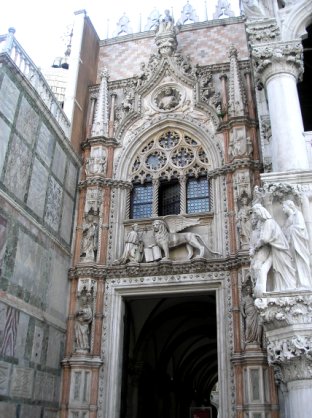 |
|
The gate is one of the highlights of
Venetian architecture, though it has to be said it did not appeal to
John Ruskin. He wrote of the ‘insipid confusion’ of the Porta della
Carta, the ‘corruption of all architecture’.
I will leave you to decide
whether you do or do not disagree with him! The gate was commissioned by
Doge Francesco Foscari (1423-1457) who appears above the doorway
kneeling before the lion of St Mark. Work began in 1438 by Bartolomeo Bon
and his father Giovanni. The name 'carta', paper, refers to scribes who worked at
this location.
Important features
|
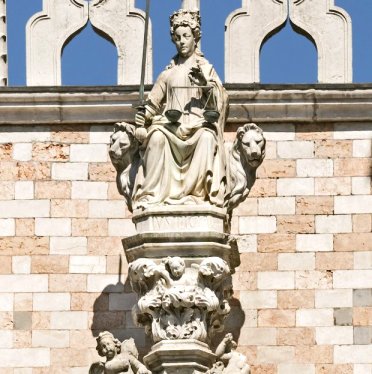 |
Up above the gate is the statues of
Justice, shown above. She holds the well-balanced scales in one hand and
a sword in the other, reminiscent of the statue that crowns the
Old Bailey in London: similar images ae found around the world, inspired
by Justitia, the Roman godess of justice. Here she sits on the throne of
Solomon, complete with the two lions. An appropriate symbol here:
through these gates past those awaiting trial for their crimes. If the
trial did not go well, they would be heading over the bridge of sighs.
It was also seen as representing Venice itself: 'Una Venetia in forma
Giustizia'.
The principles of the republic had to be balanced with its religious
faith. Below Justice is a bust of St Mark, holding his gospel in one
hand and blessing those who passed under him with the other. His
shrine, of course, is very close by. |
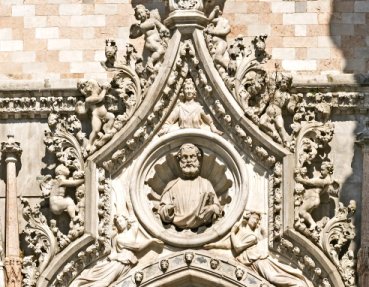 |
The most
familiar image shows
Doge Francesco Foscari, holding the Venetian flag
and kneeling before the lion of St Mark. This is
not the
Bartolomeo Bon original, which was badly
damaged when Napoleon arrived in 1797, but a nineteenth century copy. |
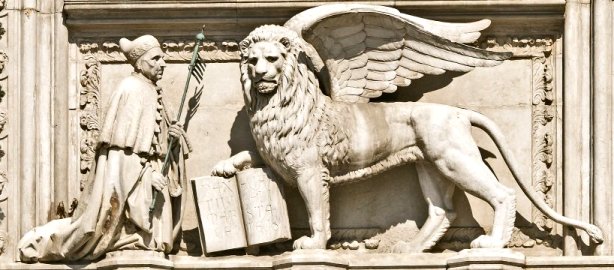 |
| |
| On each side of the doge and
lion sculpture and the doorway are four statues of virtues, Charity,
Prudence, Hope and Fortitude, all regarded as attributes of Venice.
Some historians tell us that these are by
Antonio Bregno, not Bartolomeo Bon. |

Charity |
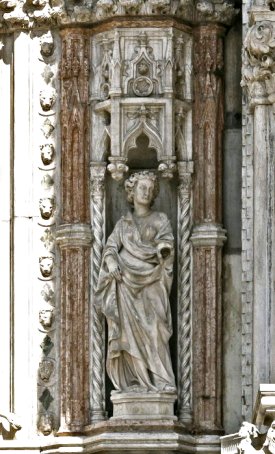
Prudence |
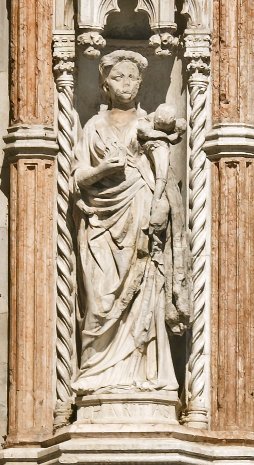
Hope (Speranza) |
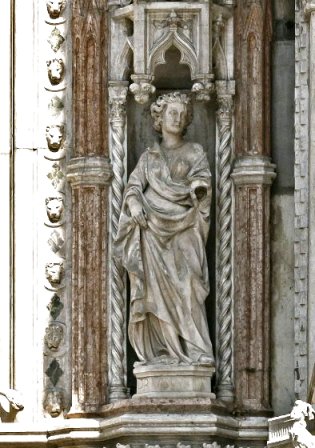
Fortitude |
| Above the capital of the
adjacent column of the ducal palace is another fine carving, definitely
attributed to Bartolomeo Bon. The palace was seen as a parallel to the
palace of Solomon. Here is shown the judgment of Solomon, in which the
wise king sorts out the claim of the two women to the living child. 'And all Israel heard of the judgment which
the king had judged; and they feared the king: for they saw that the
wisdom of God was in him, to do judgment'.
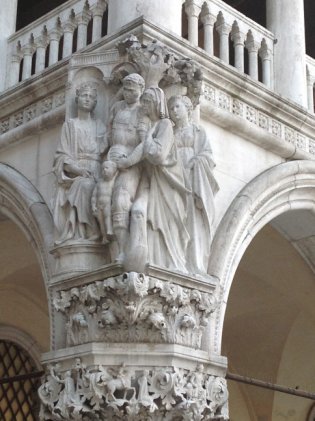
|
|
Art
in context index
Home page - enjoy
the site |








